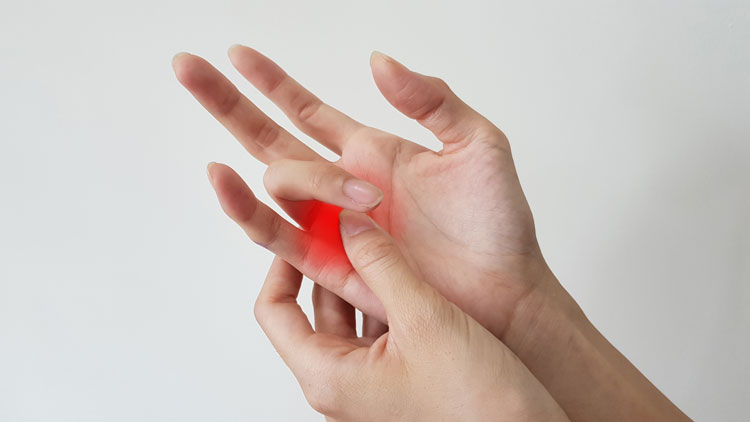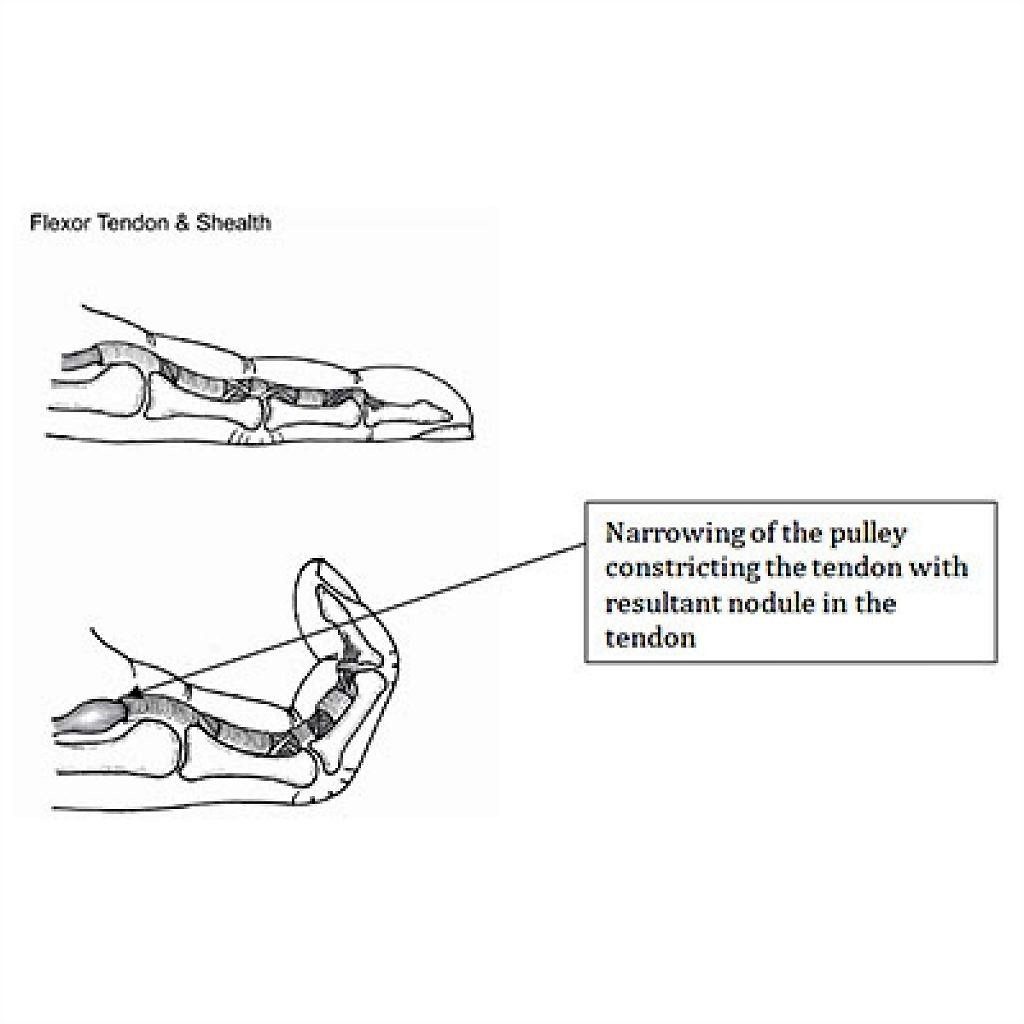 What is Trigger Finger?
What is Trigger Finger?
Trigger Finger is a very common cause of pain and stiffness in the fingers.
The tendons that flex or bend the fingers become stuck in the palm, at the entrance to a tunnel called the flexor sheath that goes into the finger. This tunnel keeps the tendons close to the bone when the finger flexes, helping them flex the finger more effectively. In trigger finger, the entrance to the tunnel, called the A1 pulley, becomes thickened and narrowed, restricting the tendon movement. The friction of the tendon rubbing against the narrowed A1 pulley each time it passes through makes it become more swollen and stiffer and makes its movement painful.
This happens when there is swelling and narrowing of the tendon sheath in the palm (the hood anchoring the flexor tendons to the bone), causing constriction of the flexor tendon at the entrance of the sheath. A nodule forms when the tendon fibres bunch up at the entrance and when the tendon is finally force through, it “triggers”.
Each of the fingers and the thumb have a flexor sheath and may be affected by trigger finger.

How Do I Know I Have it?
In the early stages, you may just have some pain in the palm and a bit more difficulty flexing and extending the affected finger. Most people will ignore this and carry on with their activities as normal.
In the next stage, you will notice that the finger “jams” or “catches” when you try to extend it from a fully flexed position. This is called “triggering” as it is similar to when the trigger of a gun is pulled, it has some resistance initially and then suddenly moves freely after it passes the catch. The finger can still extend fully after it has overcome this resistance. This is often painful but not always. Sometimes you may wake up with the finger stuck in flexion and needing to be pulled straight. The finger movement improves after doing some exercises to loosen your hand, after which it may be fine for the rest of the day.
Eventually, everything becomes so stuck that the finger cannot bend fully without using a lot of force, and once it does, it becomes stuck in flexion and cannot be extended without being pulled straight using the other hand. It is usually very painful when this happens.
If you leave the finger stuck in flexion for too long, it becomes impossible to straighten it even with the other hand. This is the final stage of trigger finger.


